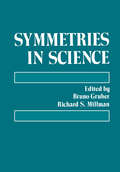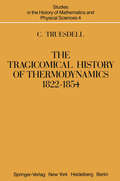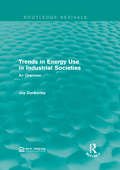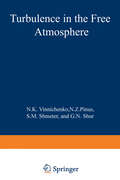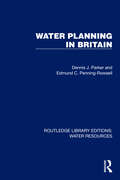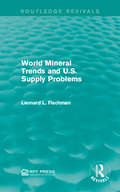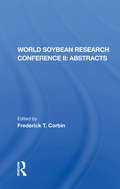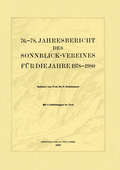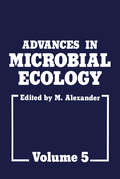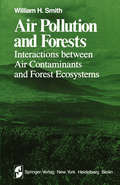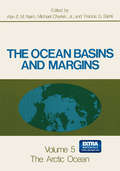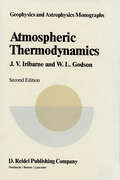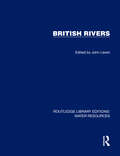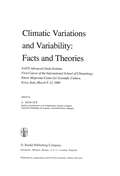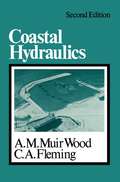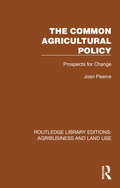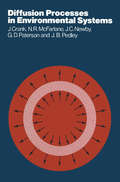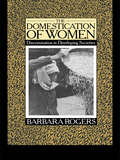- Table View
- List View
Symmetries in Science
by Bruno GruberSouthern Illinois University at Carbondale undertook to honor Albert Einstein as scientist and as humanitarian in commemo ration of his lOOth birthday during an "Albert Einstein Centennial Week", February 23 - March 2, 1979. During the course of this week two Symposia were held, entitled "Symmetries in Science" and "Einstein: Humanities Conscience", in addition to cultural and social activities honoring Einstein. This volume presents the Symposium "Symmetries in Science". It reflects the outstanding response that was given to our "Albert Einstein Centennial Week" by the international community of scientists. The motivation to have a celebration honoring Albert Einstein at Southern Illinois University at Carbondale was supplied by Dr. Paul A. Schilpp, the editor of the "Library of Living Philo sophers". Albert Einstein has contributed to this series with his autobiographical notes, a kind of autobiography of his scientific life, in a volume entitled "Einstein: Scientist-Philosopher", the most popular among all the outstanding volumes of this series. Dr. Paul A. Schilpp's presence at Southern Illinois University at Carbondale provided a natural link for an Einstein Celebration as a kind of a continuation of the contribution he made to mankind through the Einstein volume of his "Library of Living Philosophers".
The Tragicomical History of Thermodynamics, 1822–1854 (Studies in the History of Mathematics and Physical Sciences #4)
by C. TruesdellTrends in Energy Use in Industrial Societies: An Overview (Routledge Revivals)
by Joy DunkerleyTaken from a report for the Electric Power Research Institute, Joy Dunkerley’s study aims to clarify the relationship between energy consumption and economic output in industrialised countries. Originally published in 1980 and using data from 1972, this study uses cross-country comparisons of energy use to stress the importance of new supply options and measures of controlling energy use without affecting living standards whilst also discussing the impact of energy prices and economic growth in the countries studied. This title will be of interest to students of environmental studies.
Trends in Energy Use in Industrial Societies: An Overview (Routledge Revivals)
by Joy DunkerleyTaken from a report for the Electric Power Research Institute, Joy Dunkerley’s study aims to clarify the relationship between energy consumption and economic output in industrialised countries. Originally published in 1980 and using data from 1972, this study uses cross-country comparisons of energy use to stress the importance of new supply options and measures of controlling energy use without affecting living standards whilst also discussing the impact of energy prices and economic growth in the countries studied. This title will be of interest to students of environmental studies.
Turbulence in the Free Atmosphere
by N. VinnichenkoTurbulence-the randomly disordered movement of volumes of air of widely varying size-is one of the characteristic features of atmospheric air flows; its investigation is essential for the solution of several theoretical and practical problems. Until recently, owing to experimental difficulties, research on turbu lence was confmed mainly to the lower half of the troposphere. Theoretical investigations have consequently been based on these data. The rapid development of high-altitude aviation and cases of aircraft encoun tering hazardous turbulence led to a sharp intensification of research on turbu lence in the atmosphere up to 10-12 km, and subsequently at greater altitudes. Such research was confined initially to the characterization of the frequency of occurrence of gusts of different speeds, their relation to altitude, geographical conditions, time of day and year, and so on. At the end of the fifties, when the required measuring equipment and experimental techniques had been developed, it became possible to investigate the complete statistical characteristics of turbu lence: the spectral densities of the velocity fluctuations of air flows, structure functions, etc. These data stimulated the further development of theory related to the specific conditions of the free atmosphere.
Water Planning in Britain (Routledge Library Editions: Water Resources)
by Dennis J. Parker Edmund C. Penning-RowsellOriginally published in 1980, this book provides a penetrating and scholarly analysis of the planning of water resources, based on 10 years’ of research into one of Britain’s most vital industries. At the time of original publication Britain had a plentiful natural supply of water, but accessible clean water was scarce; droughts were not uncommon, floods often caused considerable damage; water bills were rising dramatically and consumption increasing inexorably. All of which applies as much to water resources in the UK today. Water planners must strike a delicate balance between many conflicting social, environmental, political and financial demands. Britain’s water authorities are large and autonomous organisations subject to constant change and controversy. Water policies affect not only water but also land-use planning, recreation planning, environmental quality, food production and the maintenance of public health. The book explains common threads and issues in the planning of 4 main water functions: water supply, effluent disposal and pollution control, water recreation and amenity and land drainage and flood alleviation. 11 original British case studies have been selected to illustrate the issues involved. The final chapter presents a critical and controversial evaluation of water policy and planning institutions in Britain, highlighted by some international comparisons.
Water Planning in Britain (Routledge Library Editions: Water Resources)
by Dennis J. Parker Edmund C. Penning-RowsellOriginally published in 1980, this book provides a penetrating and scholarly analysis of the planning of water resources, based on 10 years’ of research into one of Britain’s most vital industries. At the time of original publication Britain had a plentiful natural supply of water, but accessible clean water was scarce; droughts were not uncommon, floods often caused considerable damage; water bills were rising dramatically and consumption increasing inexorably. All of which applies as much to water resources in the UK today. Water planners must strike a delicate balance between many conflicting social, environmental, political and financial demands. Britain’s water authorities are large and autonomous organisations subject to constant change and controversy. Water policies affect not only water but also land-use planning, recreation planning, environmental quality, food production and the maintenance of public health. The book explains common threads and issues in the planning of 4 main water functions: water supply, effluent disposal and pollution control, water recreation and amenity and land drainage and flood alleviation. 11 original British case studies have been selected to illustrate the issues involved. The final chapter presents a critical and controversial evaluation of water policy and planning institutions in Britain, highlighted by some international comparisons.
World Mineral Trends and U.S. Supply Problems (Routledge Revivals)
by Leonard L. FischmanEven though the United States relies heavily on imports for many non-fuel minerals, mineral supply has played only a small role in foreign policy since World War II. Originally published in 1980, this report investigates seven major non-fuel minerals in relation to long-term potential supply and price problems and any short-term issues that may arise to put concerns about supply in perspective for policy-makers. This title will be of interest to students of Environmental Studies and professionals.
World Mineral Trends and U.S. Supply Problems (Routledge Revivals)
by Leonard L. FischmanEven though the United States relies heavily on imports for many non-fuel minerals, mineral supply has played only a small role in foreign policy since World War II. Originally published in 1980, this report investigates seven major non-fuel minerals in relation to long-term potential supply and price problems and any short-term issues that may arise to put concerns about supply in perspective for policy-makers. This title will be of interest to students of Environmental Studies and professionals.
World Soybean Research Conference Ii, Abstracts
by Frederick T CorbinThe result of strong international interest in the soybean, the World Soybean Research Conference II was held March 26-29, 1979, at North Carolina State University. This volume contains summaries of the more than two hundred papers presented at that meeting. The authors, international authorities in their fields, represent sixteen areas of professi
World Soybean Research Conference Ii, Abstracts
by Frederick T CorbinThe result of strong international interest in the soybean, the World Soybean Research Conference II was held March 26-29, 1979, at North Carolina State University. This volume contains summaries of the more than two hundred papers presented at that meeting. The authors, international authorities in their fields, represent sixteen areas of professi
76.-78. Jahresbericht des Sonnblick-Vereines für die Jahre 1978-1980 (Jahresberichte des Sonnblick-Vereines #1978-80)
by Ferdinand SteinhauserAdvances in Microbial Ecology (Advances in Microbial Ecology #5)
by M. AlexanderAdvances in Microbial Ecology was established by the International Commis sion on Microbial Ecology to provide a vehicle for in-depth, critical, and, it is hoped, provocative reviews on aspects of both applied and basic microbial ecol ogy. In the five years of its existence, Advances has achieved recognition as a major source of information and inspiration both for practicing and f
Air Pollution and Forests: Interactions Between Air Contaminants and Forest Ecosystems (Springer Series on Environmental Management)
by William H. SmithThis series is dedicated to serving the growing community of scholars and practitioners concerned with the principles and applications of environmental management. Each volume will be a thorough treatment of a specific topic of importance for proper management practices. A fundamental objective of these books is to help the reader discern and implement man's stewardship of our environment and the world's renewable resources. For we must strive to under stand the relationship between man and nature, act to bring harmony to it, and nurture an environment that is both stable and productive. These objectives have often eluded us because the pursuit of other individual and societal goals has diverted us from a course of living in balance with the environment. At times, therefore, the environmental manager may have to exert restrictive control, which is usually best applied to man, not nature. Attempts to alter or harness nature have often failed or backfired, as exemplified by the results of imprudent use of herbicides, fertilizers, water, and other agents. Each book in this series will shed light on the fundamental and applied aspects of environmental management. It is hoped that each will help solve a practical and serious environmental problem.
The Arctic Ocean
by Alan NairnThis trip backward in time capsulizes in a general way the geologic development of the area that is now northern Alaska. The Cretaceous through Recent history is predominantly one of erosion of the ancient Brooks Range and filling of the Colville Geosyncline under processes like those in Operation today. All the rocks older than Jurassic, however, were deposited far from their present sites. One of the intriguing tectonic puzzles involves the geographic positions and relative timing of events that occurred during the orogeny that built the Brooks Range. I suggest that pre-Cretaceous deposition took place far to the north along the western margin of the Caledonides. Subsequently, the region that is now northern Alaska moved southward and impinged upon a northward moving plate, or plates, from the Pacific region. Interactions between these two major parts of the earth's crust produced the Brooks Range during the Jurassic. Later developments reflect continuing readjustments of the northern third of of thrust Alaska as southward movement was dissipated in diverse systems faulting and lateral displacement. ACKNOWLEDGMENTS I am indebted to many colleagues who, during the past 30 years, shared with me the excitement and pleasures of exploring the geology of northern Alaska. Among these are W. P. Brosge, H. N. Reiser, R. L. Detterman, A. K. Armstrong, A. L. Bowsher, E. G. Sable, I. L. Tailleur, C. G. Mull, M. D. Mangus, A. H. Lachenbruch, M. C. Lachenbruch, R. L. Morris, C. J.
Atmospheric Thermodynamics (Geophysics and Astrophysics Monographs #6)
by Julio V. Iribarne W. L. GodsonThe thermodynamics of the atmosphere is the subject of severai chapters in most textbooks on dynamic meteorology, but there is no work in English to give the subject a specific and more extensive treatment. In writing the present textbook, we have tried to fiII this rather remarkable gap in the literature related to atmospheric sciences. Our aim has been to provide students of meteorology with a book that can play a role similar to the textbooks on chemical thermodynamics for the chemists. This implies a previous knowledge of general thermodynamics, such as students acquire in general physics courses; therefore, although the basic principles are reviewed (in the urst four chapters), they are only briefly discussed, and emphasis is laid on those topics that wilI be useful in later chapters, through their application to atmospheric problems. No attempt has been made to introduce the thermodynamics ofirreversible processes; on the other hand, consideration of heterogeneous and open homogeneous systems permits a rigorous formulation of the thermodynamic functions of c10uds (exclusive of any consideration of microphysical effects) and a better understanding of the approx imations usually implicit in practical applications.
British Rivers (Routledge Library Editions: Water Resources)
Originally published in 1981, this book describes and interprets the physical nature of British rivers and is authored by leading authors from universities, the Institute of Hydrology and a water Authority. The contents include data on river regimes and catchment characteristics, information on water quality in both polluted and unpolluted rivers, a full discussion of river channels and their erosion and sediment characteristics, and a consideration of river management problems in the distinctive British context. Where possible, nationwide information is presented in map form and many of the maps presented a national picture for the first time. The book will be of interest to students and scientists in a wide range of disciplines: geography, geology, environmental science, hydrology and engineering. Those professionally engaged in environmental management and the water industry should also find it useful. In summary, all who are concerned with rivers – as agents of landscape change, sedimenting phenomena, environmental resources or flood hazards will find this book as relevant now as when it was first published.
British Rivers (Routledge Library Editions: Water Resources)
by John LewinOriginally published in 1981, this book describes and interprets the physical nature of British rivers and is authored by leading authors from universities, the Institute of Hydrology and a water Authority. The contents include data on river regimes and catchment characteristics, information on water quality in both polluted and unpolluted rivers, a full discussion of river channels and their erosion and sediment characteristics, and a consideration of river management problems in the distinctive British context. Where possible, nationwide information is presented in map form and many of the maps presented a national picture for the first time. The book will be of interest to students and scientists in a wide range of disciplines: geography, geology, environmental science, hydrology and engineering. Those professionally engaged in environmental management and the water industry should also find it useful. In summary, all who are concerned with rivers – as agents of landscape change, sedimenting phenomena, environmental resources or flood hazards will find this book as relevant now as when it was first published.
Climatic Variations and Variability: NATO Advanced Study Institute First Course of the International School of Climatology, Ettore Majorana Center for Scientific Culture, Erice, Italy, March 9–21, 1980 (Nato Science Series C: #72)
by A. L. BergerGENERAL INTRODUCTION TO THE ETTORE MAJORANA INTERNATIONAL SCHOOL OF CLIMATOLOGY The "Ettore Majorana Centre" for Scientific Culture, founded at Erice in 1963 by prof. Nino Zichichi, pursues the fundamental aim to create in Europe a cultural forum of high scientific standard, which can allow young research workers to appreciate current problems of major interest in the various fields of scientific research. , Since the beginning, its International Schools (over 70, today) have actively worked in disseminating scientific culture produced at the most advanced frontiers of human knowledge, spanning varied domains from biology to nuclear physics, earth sciences, meteorology, architecture, medical sciences and so on, Recently, in 1979, the International School of Climatology has been created with the purpose to organize post-doctorate cour ,;es, in which outstanding and up-to-date outlooks, theories and results in the climatic field must be presented in didactic form. Climatic variability was the subject of the first Course, in that climatic changes represent one of the most exciting phenomenologies to study; in fact, even if the climate has changed many times in the past, so making it reasonable to as sume that it will do so in the future, it is still not easy to understand the above mentioned changes from an hydrodynamical point of view.
The Common Agricultural Policy: Prospects for Change (Routledge Library Editions: Agribusiness and Land Use #20)
by Joan PearceOriginally published in 1981, at a time when the EEC’s Common Agricultural Policy had remained largely unchanged, this book examines the criticisms of the CAP and analyses the pressures emanating from the budget and the various options which were available for tackling them. It then outlines the approaches that individual member states and others were likely to adopt, and assesses whether the need for action on the budget will be used as an opportunity to revise the CAP.
The Common Agricultural Policy: Prospects for Change (Routledge Library Editions: Agribusiness and Land Use #20)
by Joan PearceOriginally published in 1981, at a time when the EEC’s Common Agricultural Policy had remained largely unchanged, this book examines the criticisms of the CAP and analyses the pressures emanating from the budget and the various options which were available for tackling them. It then outlines the approaches that individual member states and others were likely to adopt, and assesses whether the need for action on the budget will be used as an opportunity to revise the CAP.
The Domestication of Women: Discrimination in Developing Societies (Social Science Paperback Ser. #Vol. 213)
by Barbara Rogers"The Domestication of Women is a feminist critique of international development agencies and programs. A researcher in development studies with past experience as a United Nations consultant, Barbara Rogers writes with a note of outrage about the pervasive biases against women that lead to wasteful and destructive bungling on the part of Western and Westernized men who dominate the field of development planning." - Amy Burce (Stanford University), Signs
